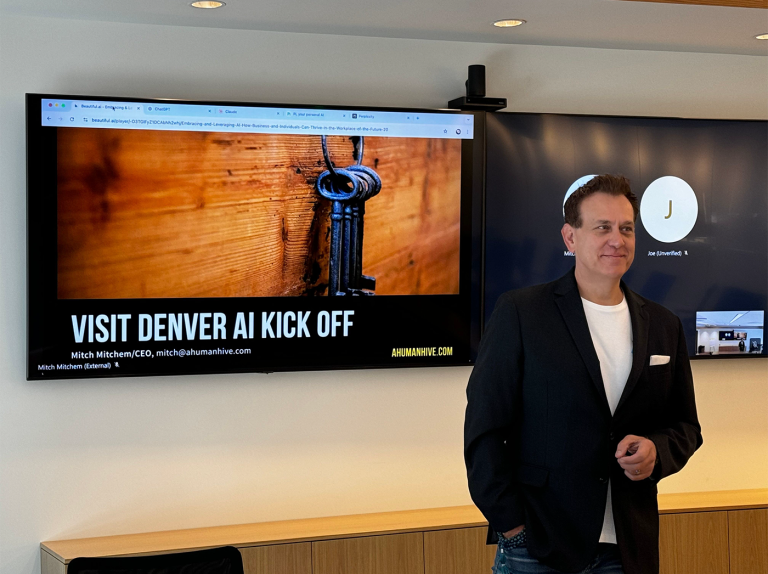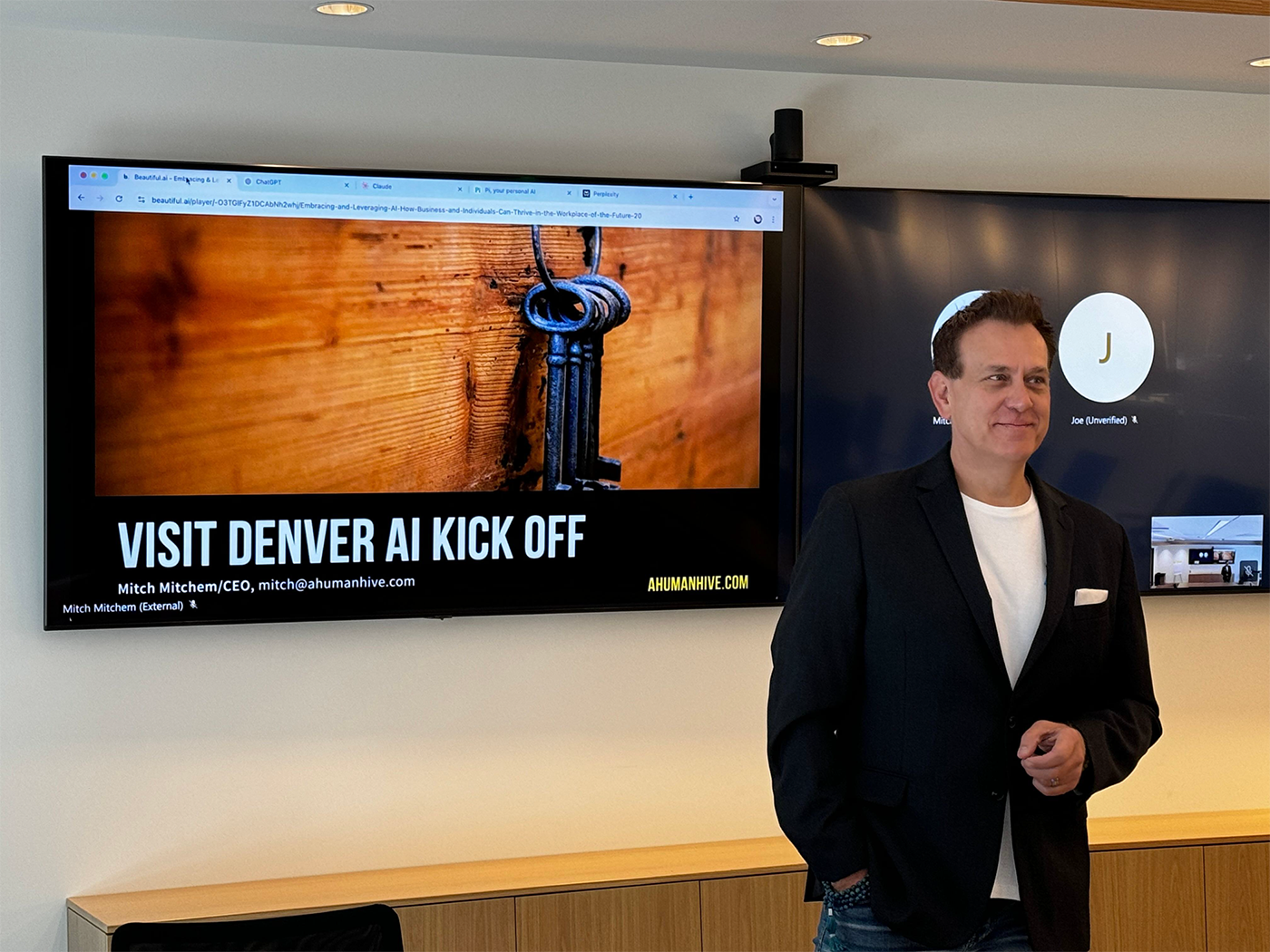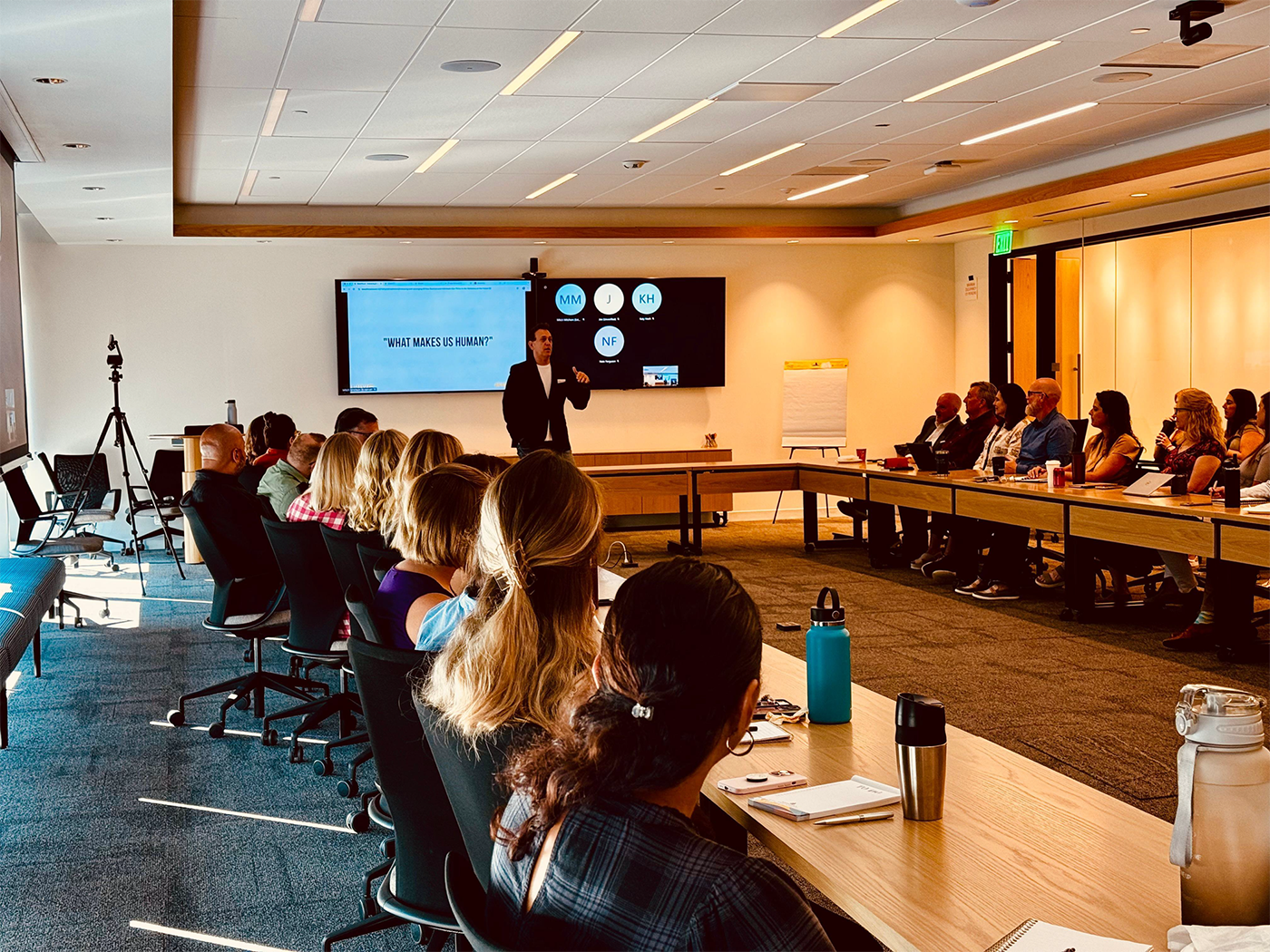
This article explores how DMOs can effectively leverage AI while maintaining human control. Drawing from real-world experiences, it offers practical strategies for integrating AI into destination marketing, emphasizing the importance of human expertise. The piece provides valuable insights for DMOs navigating the rapidly evolving landscape of AI in tourism.
As I stood in front of a room full of tourism professionals at VISIT DENVER recently, eager to unlock the potential of artificial intelligence, I couldn't help but reflect on my journey from interactive comedy stages like SecondCity to learning and development and tech startups. This unique path has given me a perspective that bridges the gap between human creativity and AI capabilities - a perspective I was about to share with these destination marketing experts and I will now share a sample of the learning with you to guide you in the rapidly changing world of AI so that you can get and maintain control of these tools to enhance your organization and your city's future.
That day, as in all my AI keynotes, I began with a story close to my heart, one that illustrates the unexpected ways AI can support us in our most human moments. "Let me tell you about a recent challenge I faced with my son," I said, watching the room lean in. "He had finally made the varsity team after years of hard work, and then, out of the blue, he told me he wanted to quit. As a parent, I was at a loss."
I paused, letting the weight of that moment sink in. "So, I did something that might surprise you - I turned to AI for advice. I asked ChatGPT to act as a therapist and guide me through this conversation with my son." The room was silent, intrigued. "And you know what? It gave me a blueprint. It reminded me to listen, to empathize, to ask open-ended questions. Armed with this guidance, I had a breakthrough conversation with my son that not only kept him on the team but strengthened our relationship."
This anecdote, I explained, is a powerful metaphor for how AI can augment our human capabilities, especially in fields like destination marketing where understanding and connecting with people is paramount.
But I was quick to emphasize that AI is a tool, not a replacement for human intuition and creativity.
I shared another story from my time in the dating app industry. "We created an app that generated 300,000 users in 11 months," I said, "but what I saw troubled me. People were becoming commodities, easily discarded with a swipe. It taught me that technology, like a hammer, can build or destroy. It's up to us to use it wisely."
This realization, I explained, forms the core of my philosophy on AI in destination marketing. While AI processes vast amounts of data and generates content at incredible speeds, it's the human touch that truly brings a destination to life. "AI can tell you where to go," I said, looking around the room, "but only a human can tell you why it matters and only a human can physically take you there." Then I started the steps of how to best integrate these tools.

First Something Critical
Like that audience, I am sure you have been wondering which AI tools you should be using, right? ChatGPT? Claude? Perplexity? Gemini? PI? Llama? It's a tech jungle out there, and it's easy to get lost. Most importantly if you rush after these tools with no direction or guidance you will make critical mistakes while wasting limited resources.
But to help you I wanted to give you some of the same tools I gave the group at VISIT DENVER. These are proven steps and strategies we at HIVE have learned from two years of research, and most importantly, over two years of using the tools every day in every use case you can imagine. These are practical takeaways and best practices for DMO/CVBs looking to integrate AI into their operations.
Keep the Human in Control
While AI tools offer incredible capabilities, it's essential to remember that they are meant to augment human intelligence, not replace it. A key I emphasize often is you must use AI as a collaborative partner rather than a standalone solution. This approach ensures that the unique stories, experiences, and nuances of a destination are not lost in the pursuit of efficiency.
Start with the Problem, Not the Tool
As mentioned above, one common mistake organizations make is jumping straight to AI tools without clearly defining the problem they're trying to solve. I advise that you first identify their challenges or opportunities, and then select the appropriate AI tool to address them. This "challenge-first" approach leads to more effective and targeted use of AI technologies.
Develop Clear AI Guidelines, Rather than Policy Based on Fear
As organizations integrate AI into their operations, it's important to establish clear adjustable guidelines for its use. This includes defining what types of tasks are appropriate for AI, as well as setting standards for data privacy and security. We at HIVE use a "Just Ask First" approach when new tools and ideas emerge. I want my people using the tools freely without fear, but responsibly. We are in a time with AI that is not like anything you have ever experienced. It moves fast, changes faster, and will keep iterating so quickly that I promise you your guidelines today around it will become outdated in the next 90 days or less. "Set it and forget it" no longer works.

Focus on Developing Human Skills
With AI taking on more routine tasks, DMOs should invest in developing their team's uniquely human skills. This includes emotional intelligence, creativity, critical thinking, presentation skills, and the ability to tell compelling stories about their destination.
Embrace AI as a Collaborative Tool - Treat It Like A Person
Rather than viewing AI as a replacement for human effort, see it as a collaborative partner and treat it like a person. Use AI to generate ideas, analyze data, and create first drafts, build innovation, analyze data, but maintain control by focusing on human expertise to refine, contextualize, and add the personal touch that makes a prompt and prompt truly come alive. That's the real secret. Treat AI as a human partner, but then go be human with the output to create the stories that matter.
DMOs have a unique opportunity to harness the power of AI while strengthening their human-centric approach. By thoughtfully integrating AI tools and focusing on authentic, personal experiences, destinations can create more engaging, efficient, and memorable experiences for visitors. The key is to strike the right balance between technological innovation and the irreplaceable human element that makes each destination special.
Submit Your Thought Leadership

Share your thought leadership with the Destinations International team! Learn how to submit a case study, blog or other piece of content to DI.


